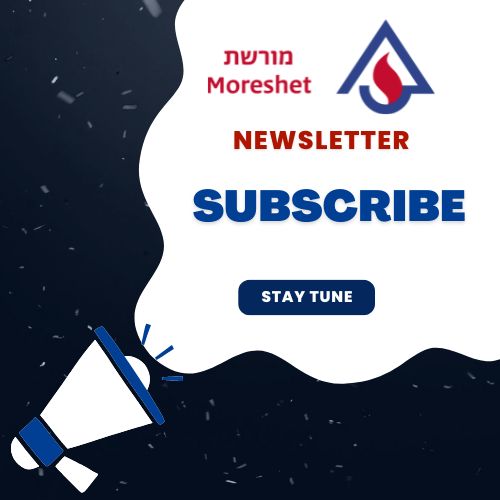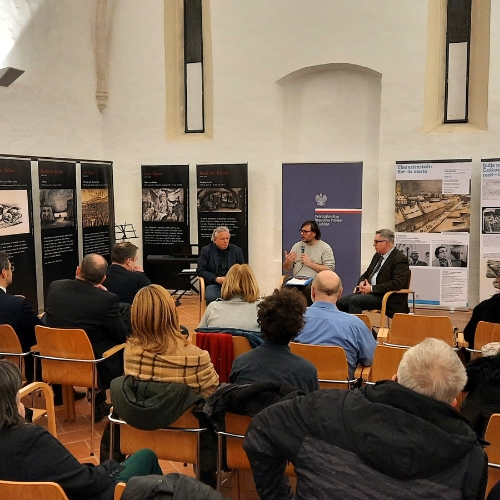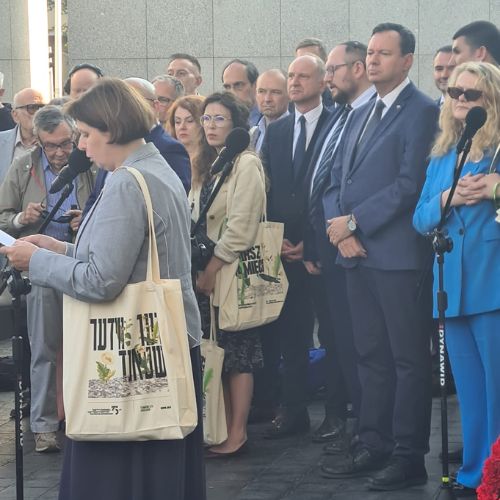Gefen educational program approved workshops and activities
In Moreshet we have a verity of Geffen approved workshops for middle and high school students
The activities can take place at Moreshet compound or as an outside guide at the requested school. All of the , workshops emphasis the historic perspective, along side a verity moral and ethical dilemmas. the workshops aren’t written in stone and can be modify for the specific students capabilities, knowledge and character. the specific correction and adjustments will be held in a pre-activity communication with the school
The activities table by names:
| The target students class | The workshop name | Geffen program number |
| 11th-12th grade | Like everybody else? | 15026 |
| 7th-9th grade | Janusz Korczak | 15637 |
| 7th-12th grade | The pre-war Jewish life | 15785 |
| 7th-12th grade | Exemplary figures in Warsaw ghetto | 15456 |
| 10th-12th grade | Shaping the memory of the holocaust | 15837 |
| 7th-12th grade | Jewish leadership during the Holocaust | 15813 |
| 10th-12th grade | The human spirit – the ambition to live during the holocaust | 15033 |
| 7th-12th grade | Resistance and Heroism | 15465 |
| 7th-12th grade | The face of resistance – Woman in the Holocaust | 15805 |
| 7th-12th grade | Youth movements during the war | 15643 |
| 10th-12th grade | The holocaust in movies | 15840 |
| 7th-12th grade | Surviving and helping during the holocaust | 15032 |
| 7th-12th grade | Ghetto life dilemmas | 15797 |
| 7th-12th grade | Camps life dilemmas | 15830 |
| 7th-12th grade | righteous among nations | 15472 |
For more details and activities adjustments: Irit Hauben – 050-6365738
The workshops description:
“Like everybody else?”
Daily life under the Nazi regime from1933 to1939
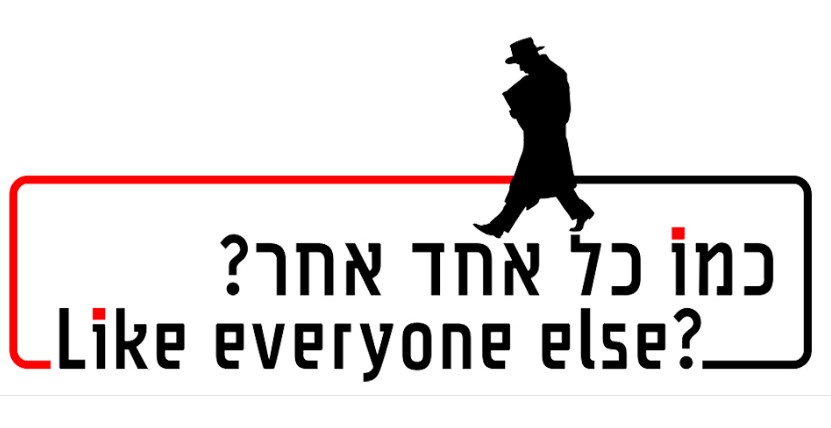
Geffen program number: 15026
To watch the activity in Geffen program site press here
“When the speech ended everybody yelled ‘Hail’. […] I yelled like everybody else, raised my arm like everybody else, cried like everybody else and loved him like everybody.”
The activity “like everybody else?” is a unique educational activity that deals with the daily life of Aryan Germans under the Nazi regime from their rise to power in 1933 to the outbreak of WWII in1939.
In this activity we’ll research that time period through different points of view. We’ll focus on the viewpoint of the then contemporary “ordinary” German perspective: what and who did he meet on the street, in the cinema and at work? How and where did he faced the regime and what was his ideas of those Governmental institutions? What dangers did he face and how did he choose to act when facingf them? Did he try to oppose them or maybe he preferred to cooperate and gain something from the new situation? We ask our participants to go on a journey starting at the Nazi party’s rise to power, a journey from which rose moral and ethical questions, questions about people and society everywhere and anytime.
The activity goals:
1. Getting to know the main characteristics of German people under the Nazi regime.
2.Examine the totalitarian realities effect on one’s inner self and one’s spirit and to examine the possibility of resisting the regime under these conditions.
3.Identification of human characteristic when being part of a crowd, while examining the red lines we’ll want to put on ourselves as part of a crowd.
The activity description:
The activity will be in groups of 25 students. Every group will go through different rooms, every room will focus on another aspect of life under the Nazi regime: the street, the authorities’ commitments, informants and terror, exclusion and oppression, the fuehrer, and the Youth & education.
On every room the pupils will face another aspect of that time period through pictures, journal papers, posters, movies, audios and more. The activities in the different rooms, along with an opening & summarizing workshop will give the groups a wide perspective and will allow them to process the contents of the activity together.
Janusz Korczak
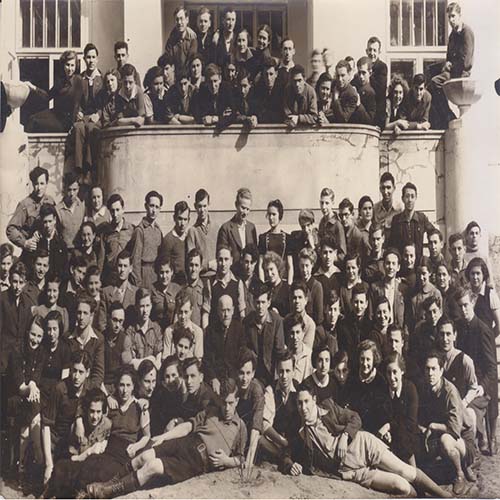
Geffen program number: 15637
To watch the activity in Geffen program site press here
This activity deals with Korczak’s educational manifesto that put values like a respectful relationship with children and any human-being in general, the choice between good and bad, care for the weak and the people around you . All of that while developing innovative pedagogical principles, which he implanted in the educational institutes in which he worked.
We’ll exam the effect of the dialogic education perceptions development in Poland and all over the world. We’ll get to know the orphanages which Korczak established which were a model for innovative democratic education. We’ll learn about the children’s courthouse and exam the different issues that were discussed in it.
We’ll read the children books Korczak wrote and learn about the way he integrated it’s stories with the orphanage children’s life. We’ll learn about Korczak’s devotion to the orphanage children and his decision to not leave them, and to be deported with them to Treblinka.
Korczak became one of the biggest Jewish historical symbols of our time.
The activity goals: getting to know the life and principles in the orphanages, understanding the significant activity of Korczak for children’s rights, to research and examine the significance of the children’s involvement in setting the rules and boundaries of the orphanage, getting to know Korczak inspirational character.
The pre-war Jewish life
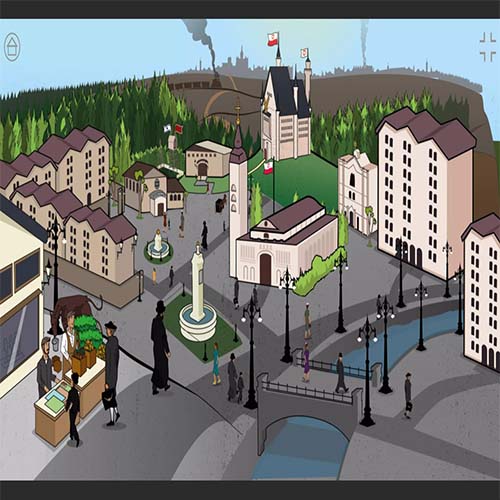
Geffen program number: 15785
To watch the activity in Geffen program site press here
We’ll get to know the Jewish town (Shteital) life through an exhibition, we’ll see a model that will bring the Jewish and polish life in the Jewish town back to life. Also, we’ll get to know the verity of Jewish youth movements and educational institutes. Moreshet’s educational staff built a virtual exhibition “The pre-war Jewish life” that allow an interactive, innovative, interesting and interactive learning on a verity of subjects.
Through the activities in the exhibition we’ll get to know the verity and richness of the Jewish life in Poland until WWII. We’ll learn how the Jewish people used to live, what occupied them and what their community life looked like. In the exhibition we invite the students to dive deep into that fascinating period of Jewish history and learn from it about our life today in Israel. We’ll do all of that through journals episodes, songs, photos and more.
The tour in the exhibition includes a workshop: the Jews in Poland until the war – “a town is not a city, a town is not a village. A town is a whole wide world” (Abba Kovner).
in this workshop, the pupils will be exposed to the rich pre-war Jewish life in Poland. Through short videos, games and quizzes we’ll get to know the different aspects of Jewish life.
The activity goals: expose the students to the rich cultural and spiritual Jewish life before the Holocaust. Through which we’ll learn with the students about Jewish identity, Jewish heritage, community and society.
Exemplary figures in Warsaw ghetto

Geffen program number: 15456
To watch the activity in Geffen program site press here
The activity “Exemplary figures” means to get students and teachers know about two men and two woman that were leading figures in Warsaw Ghetto and influent the Ghetto in many ways.
The figures are: Mordechai Anielevich, Stefania Wilczyńska, Tosia Altman, Emanuel Ringelblum. A 15 minutes video was created in dedication for each of those figures and represents their deed and actions during the Holocaust. The activity includes a workshop that deals with these figures along with David (Yurek) Plonskie’s story, a teenager that sustained his family through smuggling, fought in the Warsaw Ghetto uprising and then hid in the Aryan side.
The activity goals: the students will get to know exemplary figures from the Warsaw Ghetto, learn about their actions in the Ghetto and learn about the meaning of the phrase “inspirational model figure”
the students will experience a meaningful and enjoyable online history session.
Shaping the memory of the Holocaust
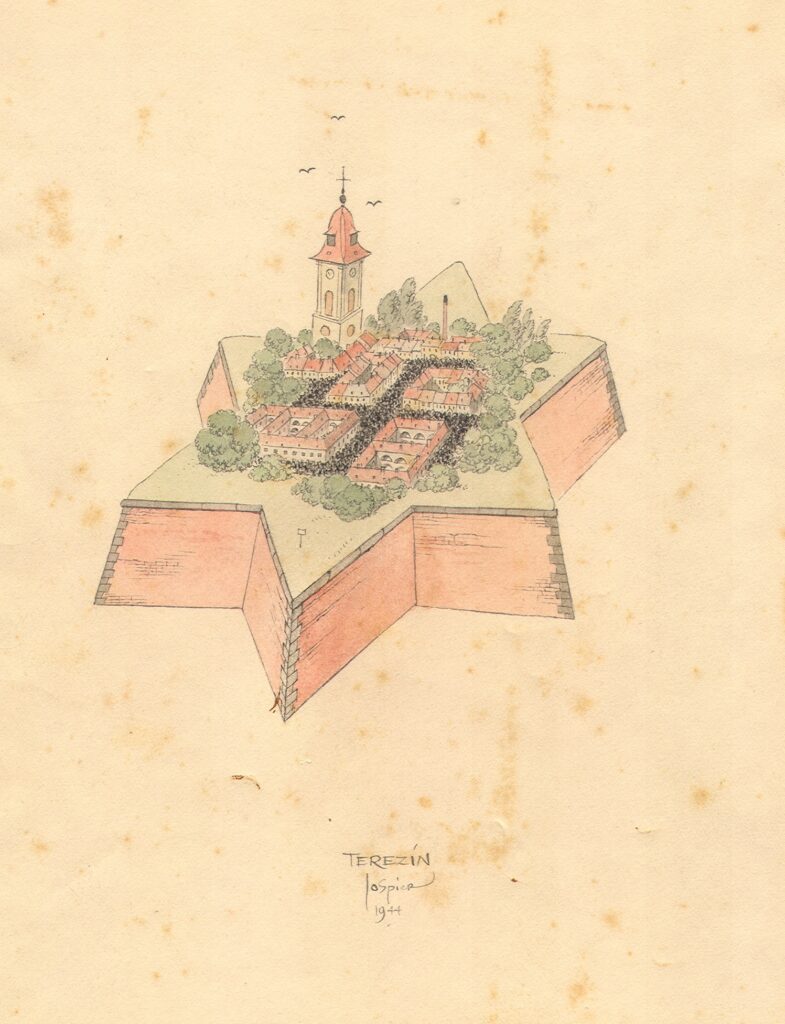
Geffen program number: 15837
To watch the activity in Geffen program site press here
As time pass, the people who deal with Holocaust memorialization, as well as educators, ponder on how to pass on these historical events, how to honor the victims and keep this dramatic chapter of the Jewish people’s history in both common and political conversation.
Moreshet institute deals with this issue and through it’s activities with students and teachers.
Shaping memmory: “I want you to build us a monument – a tombstone that reaches to the sky, a mark for the whole world to see – a statue, not of marble, not of stone, but of good deeds” ( Donia Rosen, “the forest friend”).
The activity includes a workshop that examines Holocaust memorialization development in Israel. In this workshop we’ll learn about the various characteristic and changes that happened in the memorializationof the Holocaust in Israel. We’ll try to figure out the meaning of the saying “to remember, and never forget” for us. Another subject that is forgotten with passing of time that we emphasize is the treatment of Holocaust survivors in Israel, what does society do and what can we do to help those who are still alive?
Jewish leadership during the Holocaust – Leadership in decisive junctions
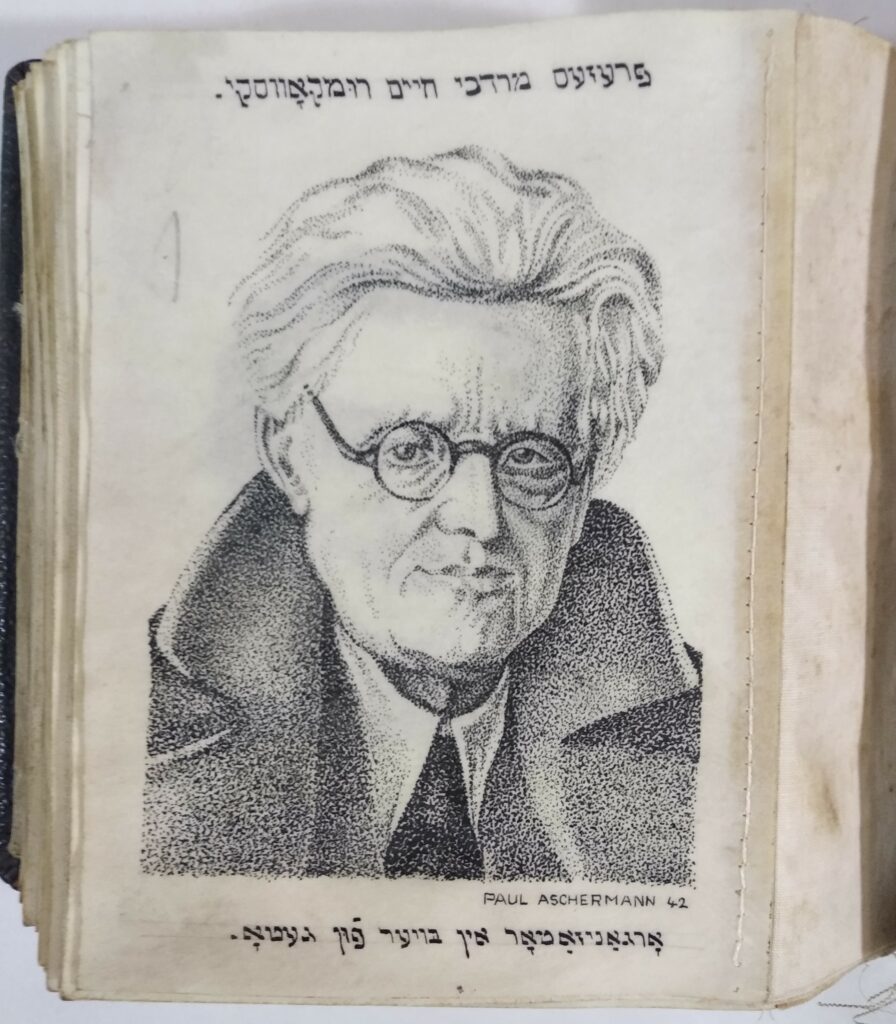
Geffen program number: 15813
To watch the activity in Geffen program site press here
The Jewish leadership during the Holocaust stood before choices and dillemas unprecedented throughout human history. This activity includes several workshops and a visit to our permanent exhibition. Through the workshop we’ll get to know the different reactions of the Jewish leadership in different places, we’ll examine the way the Jewish people refer to those that were in official and un-official positions. also, we’ll deal with ethical questions about the essence of leadership during the Holocaust and how it manifested.
– “fate wanted us to be separated […] but the same fate wanted that at the years of the hight of the suffering of our people, your mother is fulfilling a mission to ease that immense suffering.”
(Gisi Fleischmann, September 1943)
A research workshop, in it we’ll get to know both formal and un-formal leadership personalities during the Holocaust. In the workshop we’ll emphasize the development of leadership approaches of the different leaders. Not all are known to most people, even less so to school students. Through the research proses we’ll discuss ethical questions about the essence of leadership and the trying to keep a sense of humanity during the Holocaust.
– Judenrat dilemmas: “Among those managers doing their work faithfully, with dedication, from a sincere collective devotion, there are others, which don’t have the same morality”
(I.Klogman, Lodz ghetto, 1943)
This workshop deals with the judenrat leadership in different places, their dilemmas and the various decisions that were made. In the workshop we’ll deal with questions regarding leadership I general and specifically the Jewish leadership: what is the responsibility of a leader? is a leader allowed to make a decisions? What choices did the Judenrat heads have? Did the Judenrat work together with Germans or did they opposed them?
The activity goal: deepen the meaning of the term leadership, getting to know different forms of leadership, developing a stance on leader boundaries and authorities.
The human spirit – the ambition to live during the Holocaust
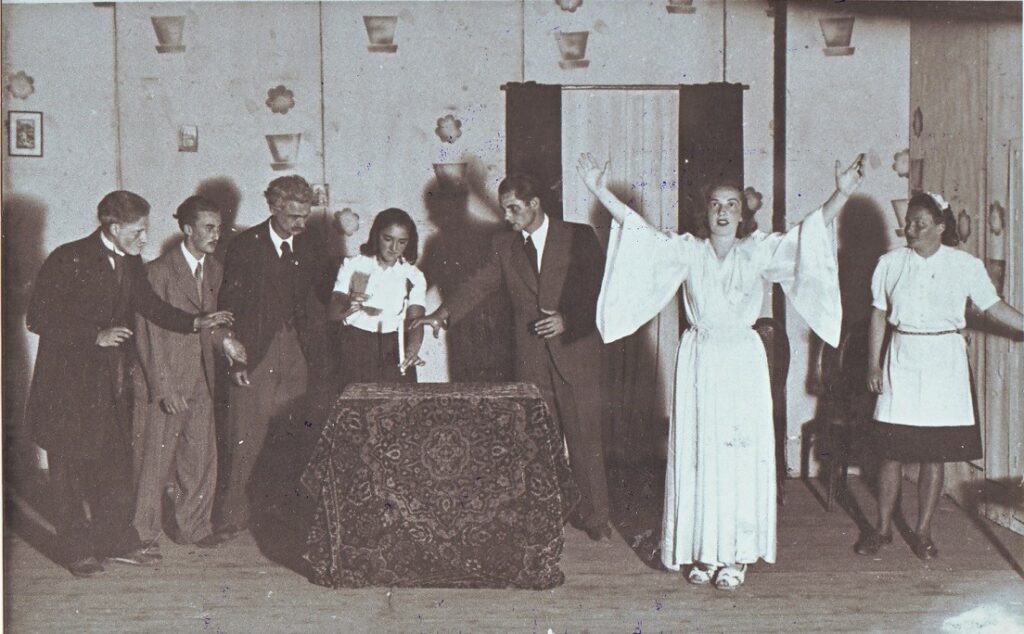
Geffen program number: 15033
To watch the activity in Geffen program site press here
The activity presents to the students issues related to the Holocaust through visual and creative objects that highlight the spirit at the time. The activity participants go through guided tours in Moreshet’s exhibitions and workshops related the subject. The pupils will get to know the historical stories and important exemplary figures in the Ghettos whose actions brings forth a rich discussion about morals, the human spirit and the will to live.
The activity goals: bringing the reality of the Holocaust to discussion. Through the discussion Moreshet is asking to bring the Israeli teenagers closer to the values of sanctified life, responsibility and acting on behalf someone else on behalf of an the people.
Resistance and Heroism

Geffen program number: 15465
To watch the activity in Geffen program site press here
This activity deals with questions as: what is a rebellion? What is heroism?
We’ll learn about Warsaw Ghetto uprising – we’ll learn about the path to an armed rebellion, we’ll discuss the ethics and ambitions of the rebels.
One of the ways to resist was joining the Partisans. We’ll deal with the Partisan’s dilemmas in the forests. Through the movie “Defiance“, we’ll ask what was the Jewish partisans dilemmas and what lead them in their decision making? Could they have choosen differently?
“The journey to the soul’s desire” – what did the rebels want to build when in Israel? What was the society they dreamed of? What is our soul’s desire? What values do we want to lead us in Israel of today? What in our reality do we want to rebel against? What do we want to change? What is the legacy that the rebels pass on to us?
The activity goals: discuss wide concepts such as rebellion and heroism, discuss the question of choice the rebels had during the Holocaust, deal with concepts like choice and resistance, in all its forms, co-operation, organization, bravery and courage.
The face of resistance – Women in the Holocaust
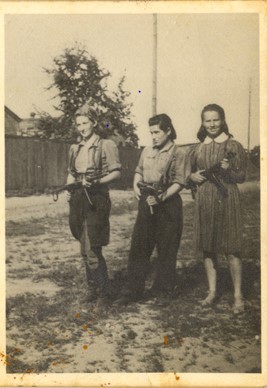
Geffen program number: 15805
To watch the activity in Geffen program site press here
Warsaw ghetto historian, Emanuel Ringelblum’s statement that”The Jewish Woman had written a magnificent page in this war book…” is a main part of Moreshet’s ethical and educational world view. the uniqueness of this activity is highlighting the voice and place of Woman that chose to act in times of horror.
The activity takes place in our exhibition “the face of resistance, woman in the Holocaust” that represent the important Role of woman in the times of the Holocaust and WWII. The exhibition Highlights the life stories and choices of dozens of woman, Jewish and non-Jewish, mothers and fighters, resistance member, saviors and righteous among the nations. The subjects in the exhibition include woman’s life in the Ghettos and Camps and their role in the Ghetto uprisings and partisan fighting. Also, we emphasize the story of woman who survived the war and build a home and a new life in Israel.
Throughout the war, young woman act as part of the underground movements as signalers that passed information, fake ID’s, weapons and more. They risked their life daily and were a significant part in the underground organization in various locations. Their work was full of difficulties, dilemmas and dangers.
In the exhibition’s workshop, we’ll learn about the signalers, how they operated, and how their sense of responsibility towards the Jewish people impacted them.
Youth movements during the war
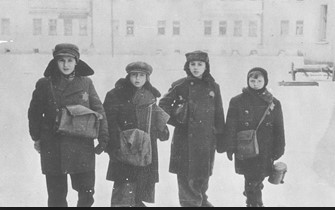
Geffen program number: 15643
To watch the activity in Geffen program site press here
The activity deals with the youth movement’s role in the Ghetto, we’ll get to know the biggest Zionist-pioneering youth movement of the time. We’ll discuss the youth movement’s daily dilemmas and the choices they made: from the choice to return to the Nazi occupation Zone, to their decision to Revolt
– We’ll reveal to the students the active and creative activities of teenagers during the holocaust.
– We shall discuss the possibility and relevance of moral activities even in difficult conditions.
– We’ll discuss the question of why specifically the youth movement members were the ones to lead the uprisings?
– We’ll examine what happened at the end of the war, through the stories of Holocaust survivors that Made Aliya to Israel with emphasis on youth movement members.
This activity brings up questions of choices in the difficult times of war, terror, mortal danger and fear. Are we, as Humans, act by our personal interests? How involved are we in what happens around us? What drives a person to act for other people, even if it puts him in danger? What role doteenagers have and how influential are they where they live.
The Holocaust in movies
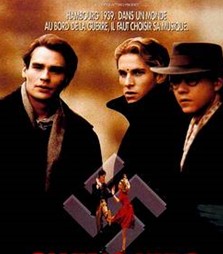
Geffen program number: 15840
To watch the activity in Geffen program site press here
When we come to discuss the Holocaust with students, its crucial to diversify the learning methods. Movies (or movie clips) can focus on chosen aspects of the holocaust and allow the viewer to experience the “story” with his own senses, they bring complex issues to be the front for an after-view discussion.
– The Nazi message: a workshop that researches the adult focused Nazi propaganda. The exposure to the Nazi propaganda help us understand how the Nazi party leaders used the fears, weaknesses and desires of the German people for their own good.
– Jewish resistance as Partisans: a workshop in which we’ll get to know the Jewish resistance and emphasize the resistance as partisans. At the Partisans there were two kinds of camps – family camps and fighting camps. We’ll get to know the dilemmas of the Jewish partisans and the context in which they operated.
– Jewish life in the camps: in that workshop we’ll face the dilemmas and choices of Jews in the concentration and extermination camps. We’ll ask what are the motivates humans to choose one way or another? do we always have options to choose from and can we speak about morality inside an extermination camp?
– Authoritarianism and obedience: what Caused millions of Germans to obey Hitler, even if they didn’t support him in the elections? What held the masses in Germany from resisting the atrocities the Nazis regime committed? We’ll deal with the meaning of life in a mob, conformism and blind obedience to authority.
Surviving and helping during the Holocaust
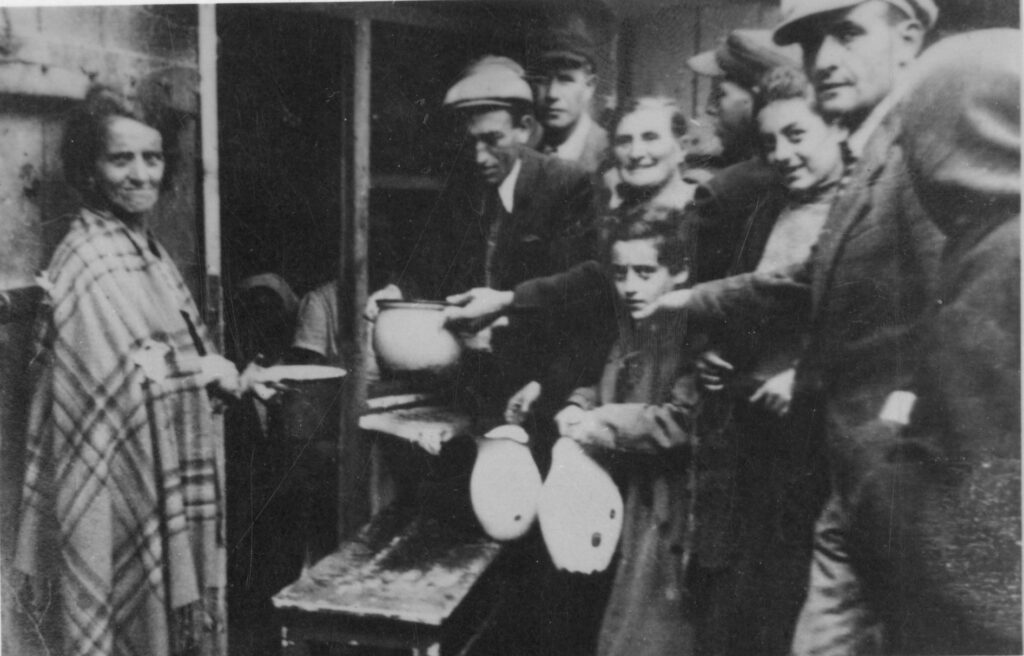
Geffen program number: 15032
To watch the activity in Geffen program site press here
This activity deals with a verity of subjects that brings together the time of the Holocaust and today. We’ll examine the life of children and teenagers during the Holocaust, we’ll get to know acts of saving by both Jewish and non-Jewish people, we’ll examine the youth movement deeds and duties, we’ll study the process of the Nazi’s rise to power and we’ll learn about Jewish-Polish relations then and today. Also, the activity deals with Holocaust memorialization in Israeli society.
The activity goal: learning about the Holocaust through issues of social education, getting to know the basic ideas of hate, racism, human rights and tolerance.
Ghetto life dilemmas
Geffen program number: 15797
To watch the activity in Geffen program site press here
The activity deals with the Ghetto’s purpose and the process of moving into the Ghetto after the Nazi’s rise to power. The activity raises the complexity of leaving one’s home and moving to the Ghetto – the meanings of the crisis. How do people organize in a reality of force labor, survival acts, family duties switching – children providing and for their families, keeping your humanity, coping with your own Jewish identity, solution finding for the daily life problems.
The activity goals: getting to know life in the Ghetto, understanding the troubles and difficulties, discussing the dilemmas life in the Ghetto create, discussing the Jewish leadership and Jewish family dilemmas and examining todays problems and the difficulties of teenagers today.
Camp life dilemmas
Geffen program number: 15830
To watch the activity in Geffen program site press here
The camp life dilemmas: “The guilt lays heavily on the system, on the structure of the totalitarian nation itself”
(Primo Levi, “The Drowned and the Saved”)
This activity deals with the daily life in the concentration and extermination camps. The activity purpose is not to replace history lessons, but to give the pupils an idea of the basic terms of life in the camps and to raise humane questions about this difficult reality. We’ll get to know the difference between the Camps and the Ghettos and try to figure out if people really do always have a choice, in every circumstance. Can we judge the victims behavior in the camps? Can we have a discussion about wrong and right in a reality with extermination and force labor?Where did they find the strength and mental power to survive the horrors and how did they keep their humanity? The activity invites the students to an open group discussions about the daily life and issues in the camps.
The activity goals: getting to know the difference between the Camps and the Ghetto, bringing to the conversation questions about life in forced situations, the behavior of the victims and the perpetrators.
Righteous among nations
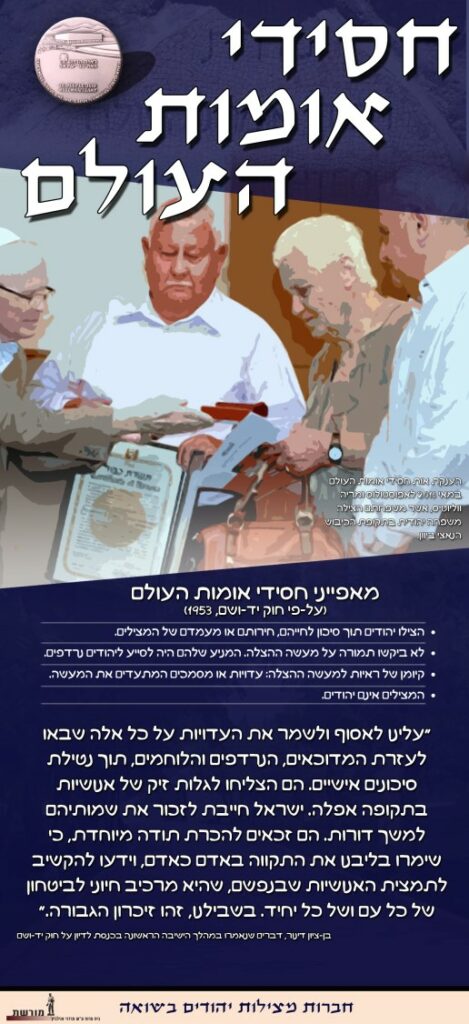
Geffen program number: 15472
To watch the activity in Geffen program site press here
This activity deals with the human side of people who experienced the horror of the war and chose to risk their and their families’ life to try and help Jewish people. The help included hiding Jews from their neighbors and sometimes even from their own family. Helping Jews is a decision that required a lot of courage and faith.
Why did those saviors act like that? What costs did they pay for their actions? would we risk our life to help and save another person?
The activity goals: bring up questions about choices and decisions making in times of war, terror, mortal danger and fear. Are we as humans act only by our own personal interests? Into what amount are we involved in the things that happen around us? What brings a person to act for the benefit of other people, even if it puts him in danger? What is the role and what effect do teenagers have in what happens in their surroundings?
For more details and activities adjustments: Irit Hauben – 050-6365738
The main photograph in this paged was cropped and modified so it will fit the page format.
The photograph is under copyright license: CC BY-SA 2.0
